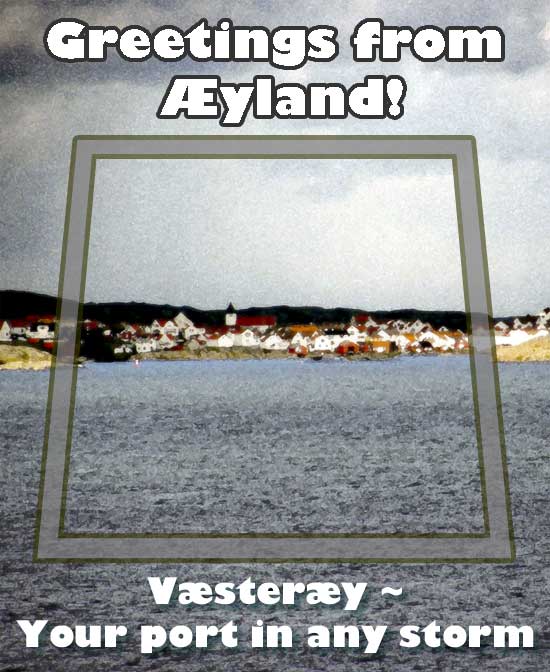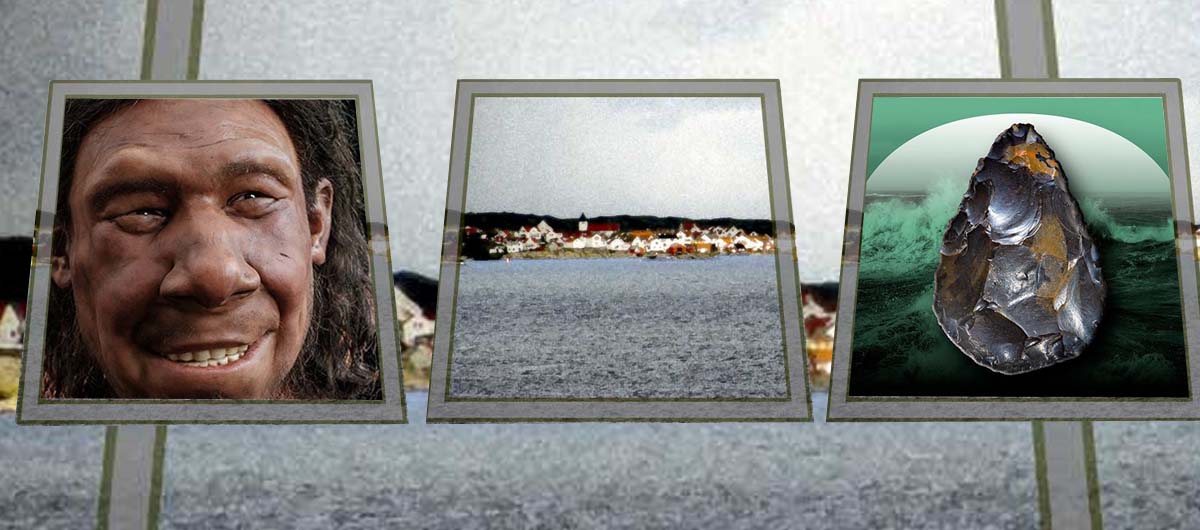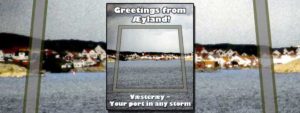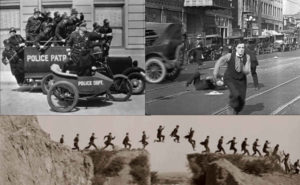Aeyland, we’ll discuss later, but Doggerland is what modern archaeologists call the lost world under the North Sea. Until the end of October 2021 there’s an exhibition by the same name at the National Museum of Antiquities (Rijksmuseum van Oudheden) in Leiden. If I could, I’d love to visit Doggerland, the real place and the museum exhibition, but I doubt I’ll be getting to either. Still, no pandemic is without its silver lining. In the on-line, socially distanced spirit of the times, the Leiden museum has published a very nice video presentation of their exhibition on YouTube.
Kirjin
At least 25% of the Netherlands lies below sea level and climate change is causing the seas to rise. To pre-empt flooding, the Dutch have been raising the height of their seaward dykes. It seems they’ve been dredging shingle from the floor of the North Sea and piling it on existing sea defences. Locals walking the dykes’ artificial beaches have always looked out with interest for things the sea may have brought in. Recently, because of the additional material, they’ve been finding even more objects.
Among the things they’ve found are the bones and teeth of mammoths and other prehistoric animals, and the fossilised droppings of hyenas. They’ve also found evidence of human activity: arrow and spearheads made of antler and bone, and worked flint tools. The most remarkable of these is a stone knife with the remains of a wooden handle attached with birch resin. It has been dated to a period 50,000 years ago.
That long ago, the people who lived in Europe were Homo neanderthalensis, cousins to us Homo sapiens. The most dramatic find in the Doggerland collection is a part of the skull of a young Neanderthal man. The skull fragment is between 50,000 and 70,000 years old, and it shows evidence of a benign bone tumour on the eyebrow ridge. Now billed as “Krijn, the first Neanderthal in the Netherlands”, the fragment has been used in a facial reconstruction. The resulting sculpture smiles at us from a recent museum blog post.
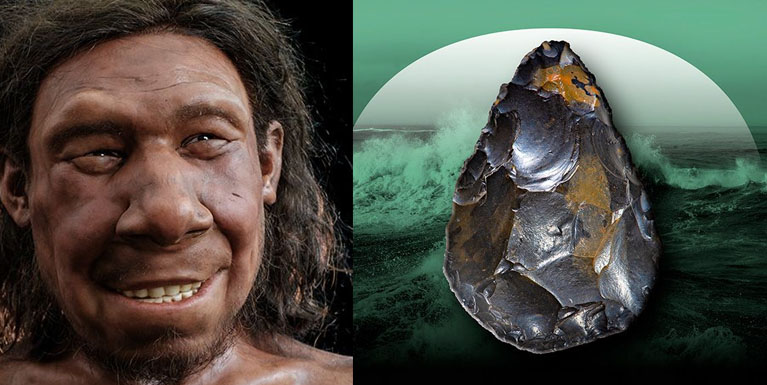
(These images borrowed, with apologies, from the website of the Rijksmuseum van Oudheden)
Sara
When I came across the Doggerland exhibition my first thought was: Sara would love this! What’s strange about this thought is that Sara is a character in a story. I dreamed her up five or six years ago. I don’t know, but I suspect it’s not entirely normal to think something in the real news will interest a fictional character. Before that suspicion grew, though, I spent time imagining how she’d react to the video. Also, what she might have to say on the subject of the Dutch dredging drowned archaeology. (She would not be polite.)
Sara is a fictional postgraduate student of archaeology, researching grave mounds on the islands of an equally fictional archipelago. I needed someone who might be able to see when a prehistoric grave mound had been disturbed in order to conceal a modern murder victim. She raised her hand and said, “Choose me!”
After I’d written about her a little, I realised she was a bit manipulative. She was happy to hold out the prospect of a romantic engagement to another of my characters. JJ, short for Jimmy-Jerome, is a few years Sara’s junior, a local boy. He’s knowledgeable about the islands, friendly with everyone (and related to many), and he has his own boat. Sara co-opts him to ferry her around and introduce her to the islanders and landowners. People who might otherwise object to an incomer traipsing across their land and measuring their cairns.
The Storegga Slide
Once upon a time, the world was colder, the ice caps thicker and sea levels were lower. The area between Britain’s east coast and the coasts of northern Europe was largely land. Rolling hills, meandering rivers, marshes and at least one great lake occupied the place we now call the North Sea. In the wide forests of oak and hazel lived animals like deer and elk, as well as mega fauna like mastodons. Along the rivers there might have been aurochs, the ancient wild cattle of Eurasia. There would have been birds, especially wetland birds, and certainly otters and beavers in the rivers. This congregation of prey animals attracted apex predators such as hyenas, wolves and lions. And humans.
As the latest Ice Age retreated and the sea levels rose, the land became more and more boggy. It was still very attractive for hunter-gatherer communities, but it was always destined to flood. It’s not clear whether, 8000 years ago, it was still possible to “have walked dryshod from France (as we call it now) to England”. Even without a disaster, the land would eventually have been submerged.
But there was a disaster. About 8,000 years ago, triggered by an earthquake, a massive underwater rockslide plunged down the continental shelf off the coast of Norway. This is known as the Storegga Slide. The tsunami it caused struck the rocky east coast of Scotland with a wall of water 6 to 8 metres high. That was more than enough to inundate what was left of the land bridge linking “France (as we call it now) to England”.
(The quote comes from a short story by HG Wells, the first piece of fiction set in Doggerland. Read it on the Gutenberg Project.)
Aeyland
But what if the tsunami had not been so great? What if the underlying geology had stood up to the wall of water as the Scottish east coast did? In my story, this happened. Instead of a shallow sea called the Dogger Bank, there was an archipelago of islands. This is where my story with Sara and JJ and the murdered body was set. But what to call it?
I didn’t feel happy with Doggerland. Apart from any other considerations, the Dogger Bank got its name from Dutch fishing boats, doggers, that used to fish the shallow seas. But if the area was occupied by inhabited islands, the locals might resent Dutch interlopers. Doggers might never have fished there, or not enough to give their name to the area. So another name seemed necessary. I called the island group the Aeylands.
Aeyland sounds a bit like island. Also a bit like eiland in Dutch and Low German, or eyland in Icelandic. It uses an invented affix (aey) that is reminiscent of, for example, the -ey in Orkney, which also means island. But then the affix also sounds a bit like nay in older forms of English: so maybe aeyland means nayland. Island or Noland. I thought this was funny.
So my story was set in Aeyland, an archipelago of islands that doesn’t exist. And they don’t exist in the same place as Doggerland, which also doesn’t exist. But which there is more archaeological evidence for. And my first thought, learning of the Doggerland exhibition in Leiden, was of the reaction I’d expect from a fictional character of my own invention.
Convoluted, but it’s given me my blog post this week!
